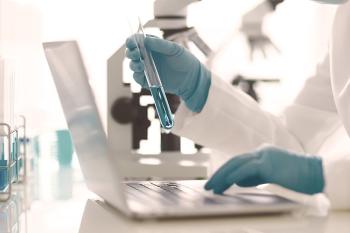Active Ingredients in Skin Care
Key Drivers, Constraints and Challenges in European Markets
Overview - Active ingredients are specialty chemicals, which are applied into cosmetic skin care products to enhance their functional properties. Active ingredients fulfill anti-ageing, exfoliating, moisturizing and other functions. They can be utilized in various skin care products such as facial and body creams, lotions, masks and other formulations and are recognized to increase value of the final products, add features that consumers demand and diversify the useful effects of skin care products.
Based on the product type, skin care active ingredients can be divided into:
- Vitamins for anti-ageing effects: Vitamin A (retinol), vitamin C (ascorbic acid), vitamin E (tocopherol), vitamin B3 (niacinamide), ubiquinone, lipoic acid;
- AHA (alpha-hydroxy acids), BHA (beta-hydroxy acids) and proteolytic enzymes for exfoliating effects;
- Sodium PCA (pyrrolidone carboxylic acid), glycerols, amino acids, hyaluronic acid, ceramides for moisturizing,
- Triclosan and triclocarban for antimicrobial effects;
- Botanical actives, including aloe vera and other extracts, for anti-ageing, exfoliating, moisturizing and antimicrobial action.
Market Overview
Without doubt, the European skin care active ingredients market is growing. The competitive factors in the market are price, technology and customer service development in the market. The main technological trends in the market include advancing of the products specialization, enhancing their purity and compatibility with other ingredients, increasing quality, production of environmentally-friendly, non-toxic active ingredients. This research service covers the market for active ingredients in the following five major sectors: anti-ageing agents, exfoliators, moisturizers, antimicrobials and botanical actives.
Market Drivers
The market drivers and restraints outlined are applicable for the European market as a whole. Specific drivers and restraints for the active ingredients market are covered in the relevant sections of this research service.
The key market drivers influencing growth in the active ingredients skin care market are the following:
- Growing demand leads to increased consumption;
- Growing customer awareness increases active ingredients demand;
- Movement towards naturally-derived ingredients drives the revenue growth in the market;
- Technological developments enhance active ingredients quality;
- Expensive active ingredients increase market revenues.
Market Restrains
The key market restraints restricting the growth of the active ingredients skin care market include:
- European legislation restricts introduction of novel actives;
- Competition prevents higher revenue growth rates;
- Competition from importing companies restricts consumption growth;
- Product maturity and availability restricts growth of active ingredients consumption.
European Anti-ageing Ingredients Market
The anti-ageing market segment mainly comprises vitamins product range. Vitamins are organic compounds, which cannot be synthesized in the body but are essential for the normal functioning as they act as catalysts of chemical reactions. Vitamins can fulfill anti-oxidative functions, increase and improve the production of collagen, increase the production of ceramides and prevent hyperpigmentation. The main product groups in the market are vitamin A (retinol), vitamin C (ascorbic acid), vitamin E (tocopherol), vitamin B3 (niacinamide), ubiquinone (CoQ10). The market is characterized by high degree of technological innovations which are directed at quality increase, anti-oxidant properties enhancement, compatibility with other ingredients and environmental safety.
European Exfoliators Market
Exfoliating agents equip skin care products with properties of replacing the weak cells of the skin with fresh cells. Exfoliators are used in facial peel-off masks, skin creams, lotions and other types of ingredients.
The product range of exfoliating agents consists of:
- AHA (alpha-hydroxy acids): Lactic, glycolic and fruit acids;
- BHA (beta-hydroxy acids): Salicylic acids, willow bark extracts;
- Proteolytic enzymes.
The key competitive factors in the market are price and technological innovations. The companies are striving to achieve higher quality of exfoliating products and implement technologies of purification, production of environmental-friendly and effective ingredients. The scientific approach to product formulating raises profitability of skin care product lines by providing exclusive skin effects.
European Moisturizers Market
Moisturizing active ingredients retain water level in the skin and prevent the skin collagen deterioration. Moisturizers create and retain the barrier at the skin to retain water, humectants attract water from the inner skin layers. Synthetic moisturizers comprise sodium PCA, glycerols, amino acids, hyaluronic acid and ceramides. The market is moving towards quality enhancing, applications diversification, properties enhancement, movement to naturally-derived products. The key competitive factors of the market are price, technology and developing technical and customer service. The companies are striving to offer customized solutions to end users.
European Antimicrobials Market
The two main types of skin care active ingredients that can be applied for antimicrobial action are triclosan and triclocarban. Antimicrobials inhibit the growth of bacteria in the skin. Antimicrobials are widely used in body lotions and creams. Triclosan is a more popular product in the market. Triclosan has been covered recently in media, the carcinogenic and toxic safety of application to the skin care products has been confirmed. The competition in the market is mainly based on price and on technology. Triclosan is biodegradable, has good activity and has no substitute active ingredient.
European Botanical Ingredients Market
Botanical ingredients represent a separate class of active ingredients for skin care. Botanical actives can be applied for anti-ageing, exfoliating, moisturizing and antimicrobial action. The botanical ingredients can act as toxins elimination agents, free radical scavengers and antioxidation agents and can improve microcirculation function, enhance skin purification, smoothness, nourishing and protection.
The key popular extracts in the market are aloe vera, green tea, kava kava and biloba. The main sources of botanical ingredients are apple, apricot, cucumber, honey and mango. The market products and manufacturing technologies are highly specialized.
Conclusions and Recommendations
- Research and development efforts are directed at achieving higher quality standards, compliance with technical requirement, development of new testing methods, widening and diversifying of active ingredients applications;
- Increasing customer awareness;
- Setting effective pricing strategies;
- Diversifying products and technologies;
- Profitability increase strategies: cost reduction strategies, suppliers partnership development, diversifying the product range, entering the new markets to achieve economies of scale;
- Marketing growth strategies.











